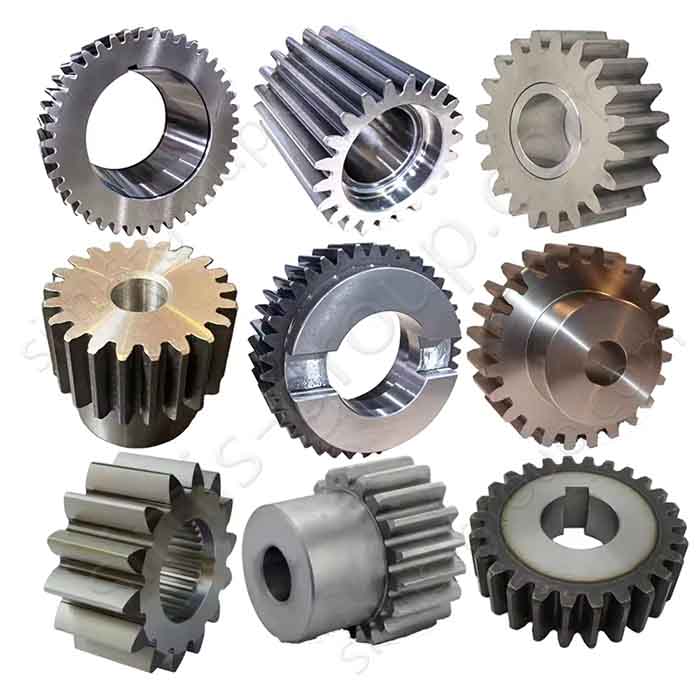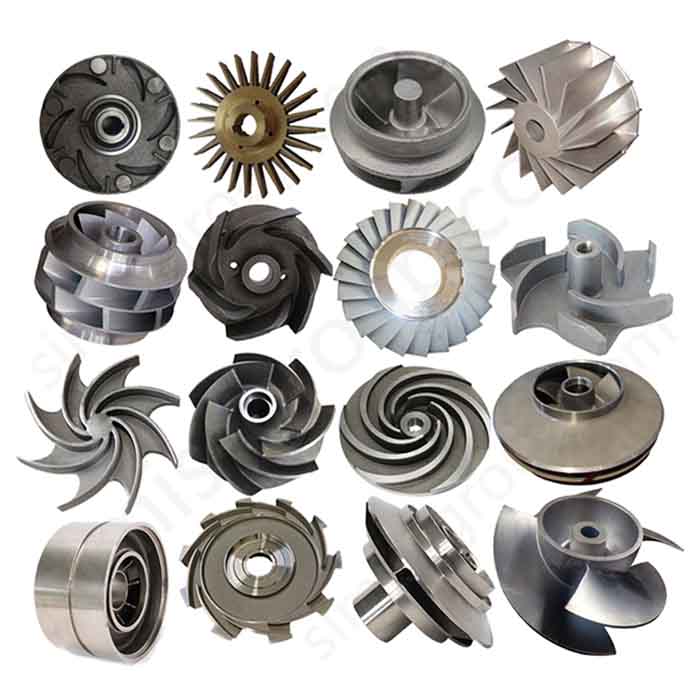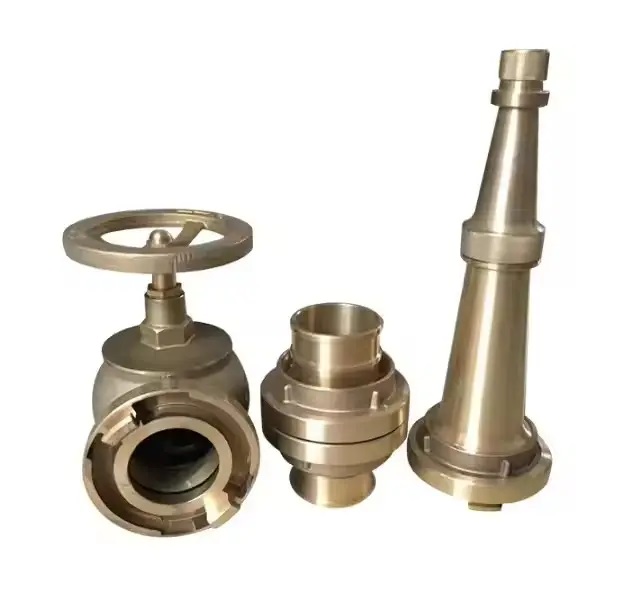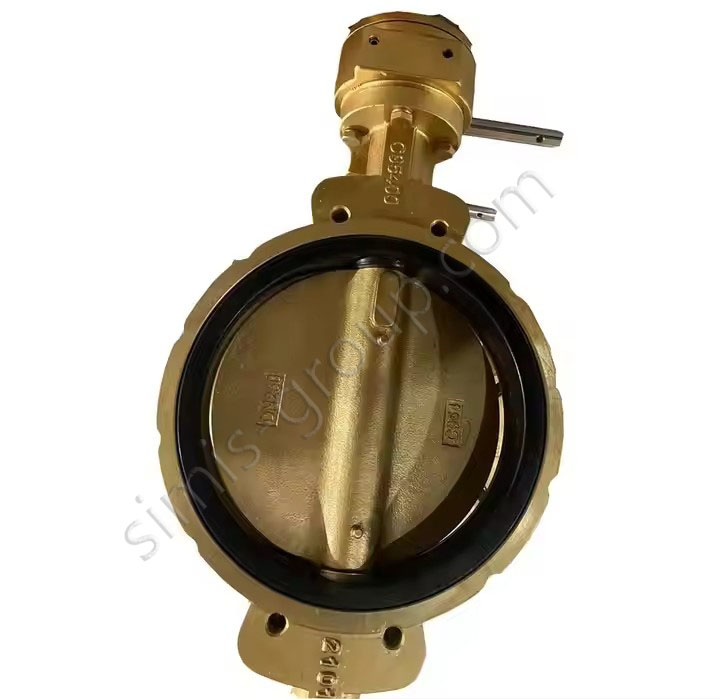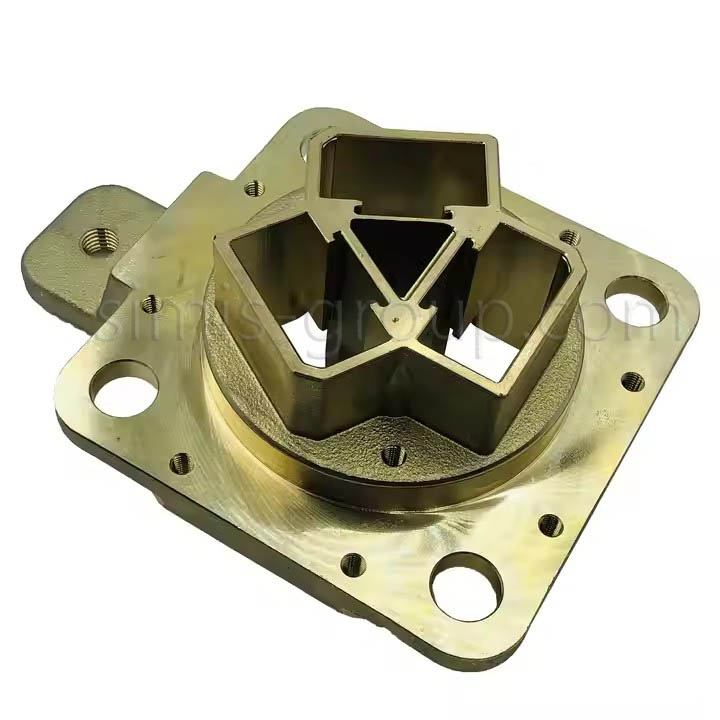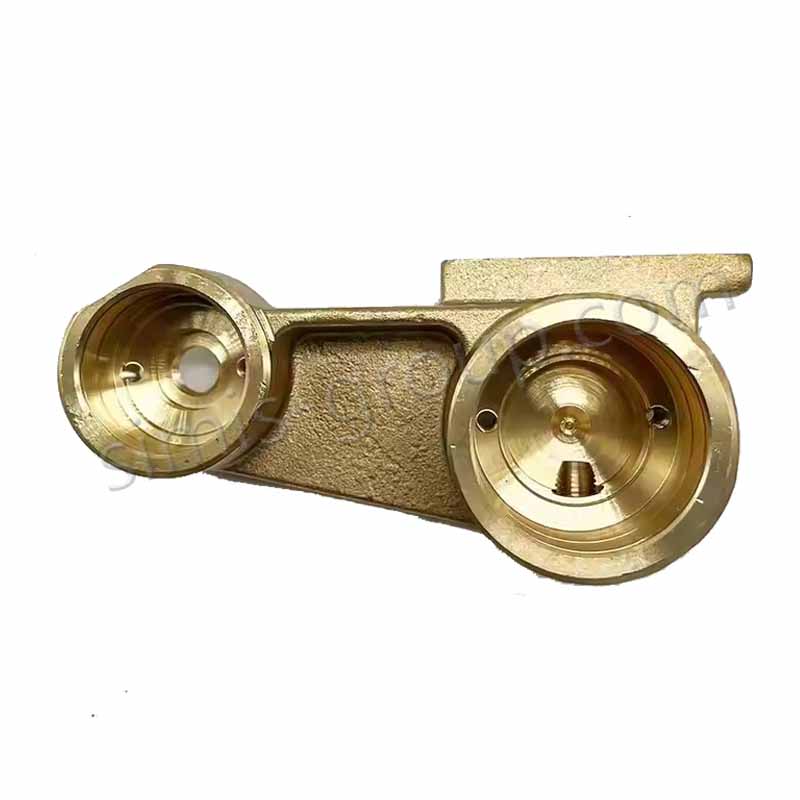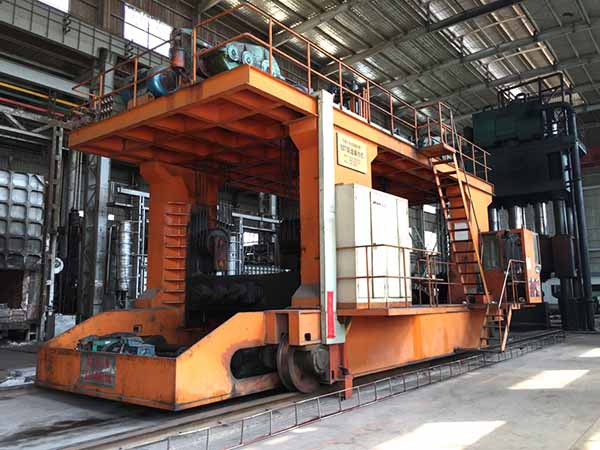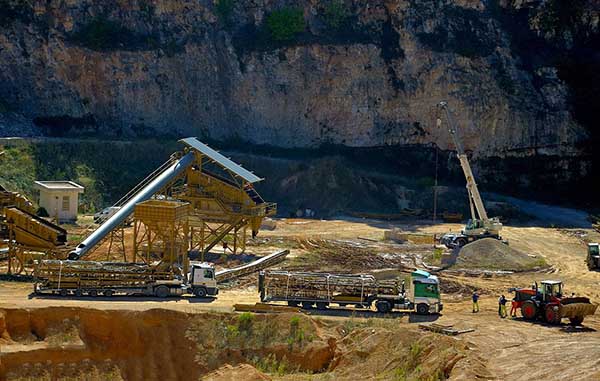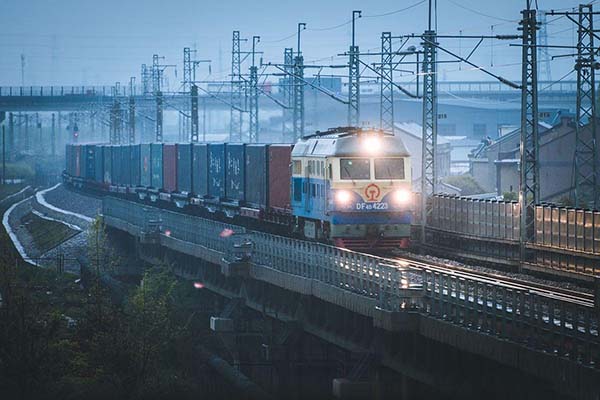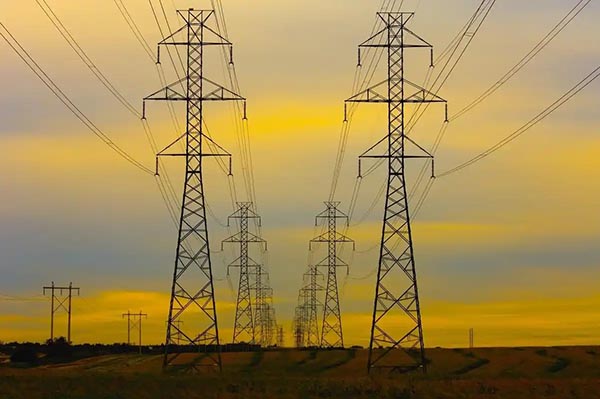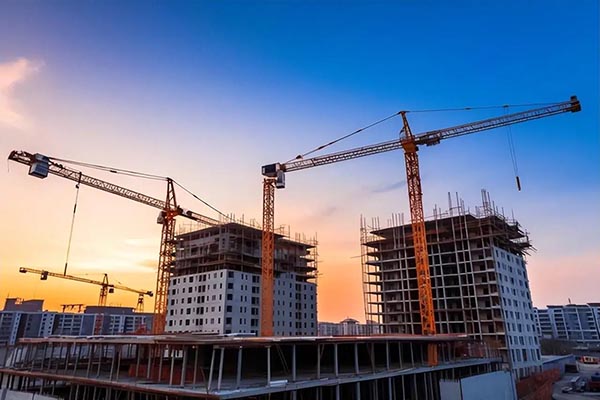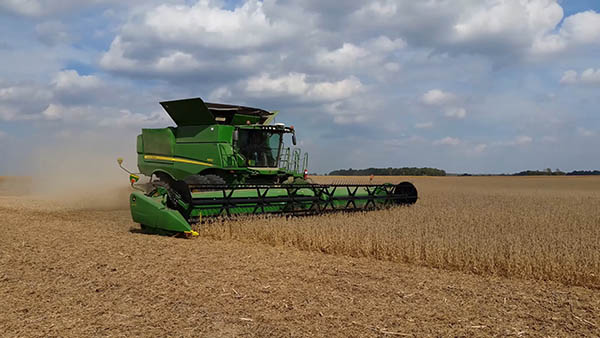Manufacturing Process of Cast Copper Parts
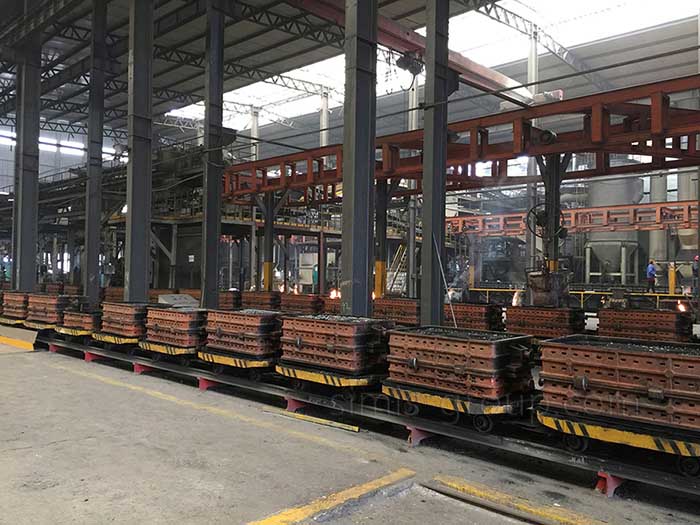
Copper Sand Casting
Copper sand casting uses sand to make the mold. We then pour hot, liquid copper into this mold. After the metal cools, workers take out the casting. They clean and finish the final part.
Low Mold Cost: Making the sand mold is cheap. Plus, we can reuse the sand many times.
Large Parts: This method is great for casting big and medium-sized aluminum parts. It handles complex shapes well.
Flexible Production: It works great for small jobs, mid-size orders, or very large production runs.

Copper Die Casting
Copper die casting uses high pressure. It forces hot, liquid copper into a metal mold very quickly. The metal fills the mold fast and hardens. This method is great for making many thin-walled, complex, and high-precision parts.
Smooth Finish: Copper parts come out with a very smooth surface and high size accuracy.
Fast Production: The time needed is very short, making it perfect for mass production.
Less Metal Loss: Very little metal is lost. The cooling inside the mold happens quickly.
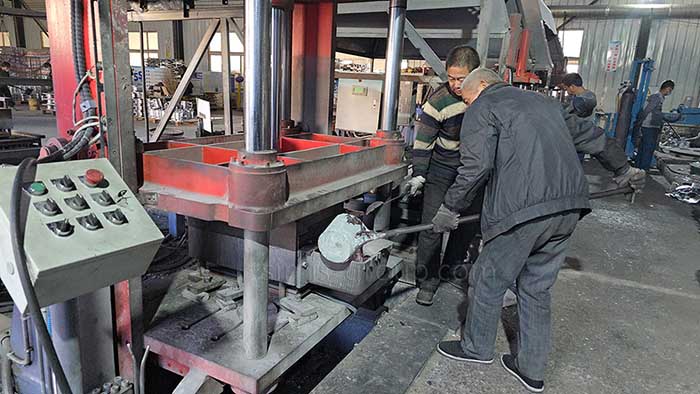
Copper Gravity Casting
Copper gravity casting often uses metal molds. The liquid copper alloy fills the mold and then hardens under its own weight. This process works well for parts that are medium complex.
Low Mold Cost: The cost to make the mold is low. This makes it good for small to medium production runs.
Larger Parts: We can make larger copper alloy alloy parts this way. They also have better density.
Affordable Parts: The final parts made by this process are relatively cheap.
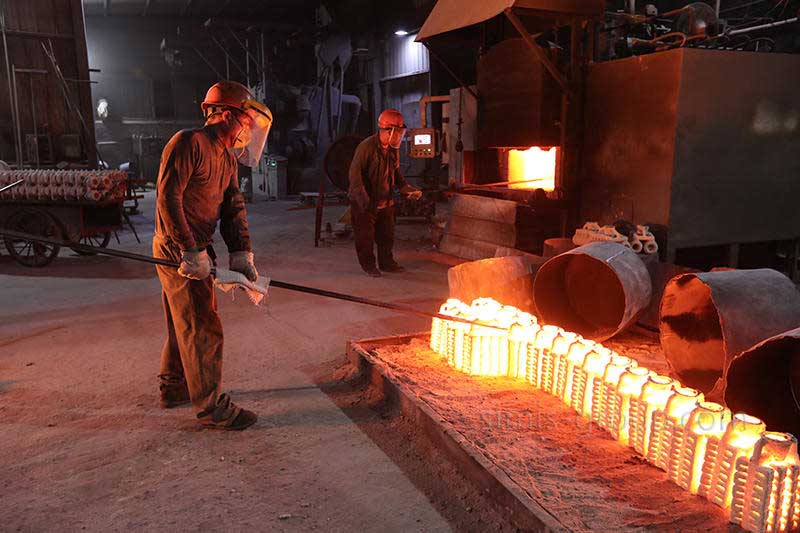
Copper Investment Casting
Copper investment casting makes high-quality parts. It uses molds made from wax or other items that can melt away. This method is often used for copper parts that have complex shapes and must be highly precise.
High Surface Quality: The parts come out with a very smooth finish.
Less Finishing Work: You won't need much post-processing, saving time and cost.
Best for Small Runs: It works well for small jobs that need high precision copper parts.
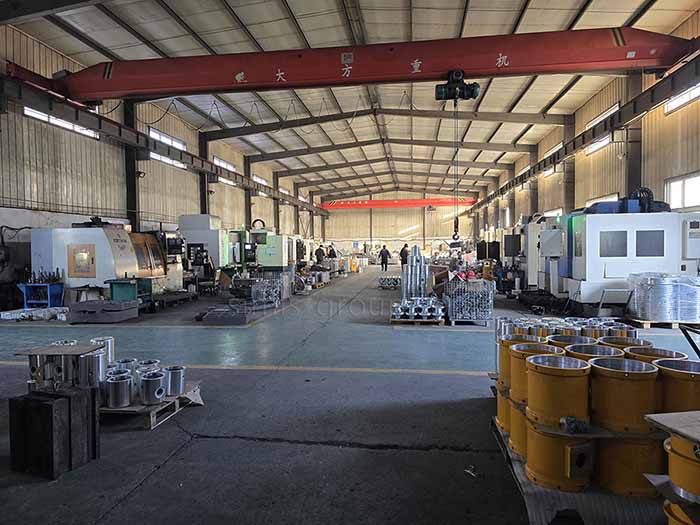
Machining
Machining is a final step for cast copper parts. It uses fine tools to improve the castings. This work boosts the part's accuracy, makes the surface much cleaner, and improves what the casting can do.
It makes the final look better.
It improves the copper part's structure and function.
It lets us make thin walls and complex shapes.
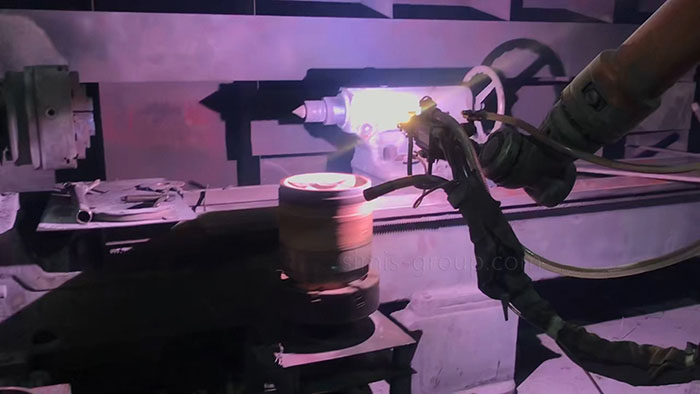
Surface Treatment
Surface treatment changes the outside of copper castings. It uses physical, chemical, or mechanical methods. This work boosts the casting's quality. It also makes parts last longer and improves how they look and function.
It makes the surface harder.
It improves the part's look and boosts its size accuracy.
It improves adhesion and resistance to corrosion (rust).
Custom Copper Alloy Castings by Simis Foundry
Different Materials of Cast Copper Alloy
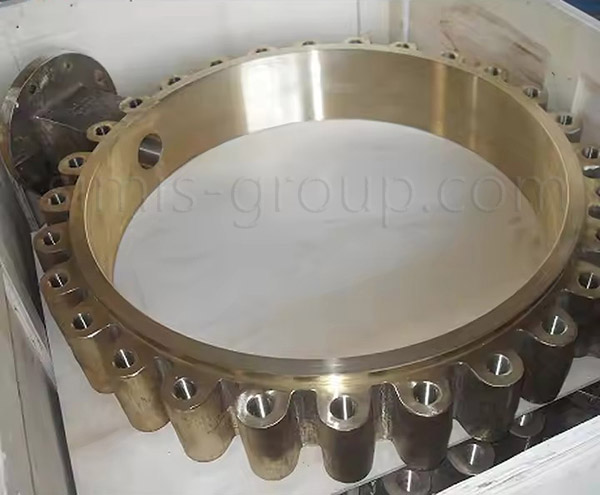
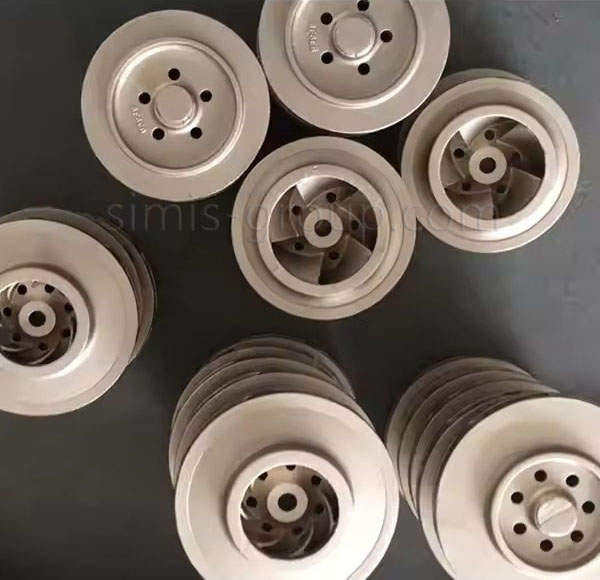
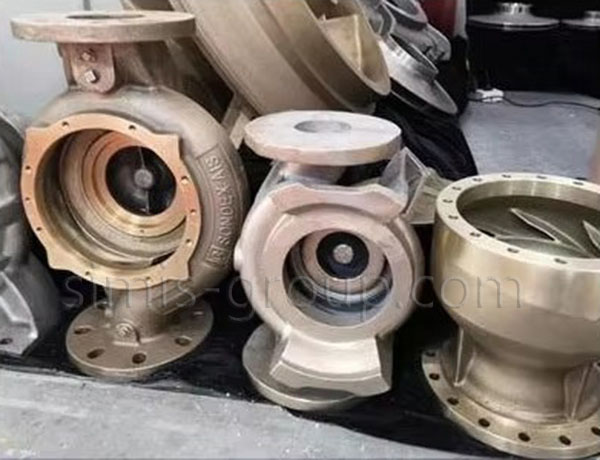
Brass Casting
Brass is an alloy of copper and zinc. It resists rust very well. It offers good mechanical strength, a nice golden look, and casts easily. It is also easy to machine and costs less. This makes brass good for many decorative and working parts.
Brass Castings from Simis Copper Foundry:
Marine hardware and fittings;
Valves, pumps, and plumbing parts;
Door handles and fixtures for buildings;
Musical instruments;
Electrical connectors;
Decorative art pieces.
Simis can cast brass types:
Low Zinc Brasses (Red Brasses, Zinc < 15%): Plumbing valves and fittings, pump parts, and marine hardware that fights rust.
High Zinc Brasses (Yellow Brasses, Zinc 15-40%): General hardware, decorative items, and architectural fittings.
Leaded Brasses: High-volume parts needing excellent machining, like valves and fittings.
Silicon Brasses: Parts that must hold pressure, marine hardware, and jobs needing high strength and rust resistance.
Aluminum Bronze Casting
Aluminum bronze is an alloy primarily composed of copper and aluminum. It delivers high strength, effective wear resistance, and good corrosion resistance. We use heat treatment to optimize the balance of strength and toughness specific to the application requirements.
Aluminum Bronze Castings from Simis Copper Foundry:
Heavy-duty bearings and bushings;
Gear parts and worm wheels;
Valve stems and seats;
Pump impellers and casings;
Marine hardware and propeller parts;
Chemical processing equipment;
Mining machine parts.
Simis can cast aluminum bronze types:
Single-Phase Bronzes (Al < 8%): Chemical process equipment, seawater pipe systems, and parts needing good shape change.
Duplex Bronzes (Al 8-11%): Strong general-purpose parts like bearings, gears, valve components, and marine hardware.
Complex Bronzes (with Ni, Fe, Mn added): Tough jobs in chemical processing, marine work, and high-heat service.
Tin Bronze Casting
Tin bronze is a traditional alloy composed of copper and tin. It features high wear resistance and good corrosion resistance. This makes it suitable for high-load, slow-speed applications and general industrial requirements.
Tin Bronze Castings from Simis Copper Foundry:
Bushings, bearings, and thrust washers;
Gears and worm wheels;
Valve parts and pump parts;
Marine hardware and propeller fittings;
Architectural pieces;
Electrical contacts.
Simis can cast tin bronze types:
Low Tin Bronzes (Sn < 8%): General-purpose bearings, valve parts, pump parts, and marine fittings.
High Tin Bronzes (Sn 8-12%): High-load bearings, worm gears, heavy machine parts, and industrial bearings.
Phosphor Bronzes (with P added): Electrical springs, contacts, bellows, and precise instrument parts.
Leaded Tin Bronzes: High-speed bearings and bushings. Perfect for jobs where oiling might not be enough.
Other Bronze / Copper Alloy Casting
Bronze is a copper alloy mixed with tin or other elements, such as aluminum or phosphorus. It provides high strength, good wear resistance, and reliable corrosion resistance, making it suitable for components subjected to heavy loads and friction. It is often used for copper alloy components in high-load, slow-speed applications and harsh operating environments.
Bronze Castings from Simis Copper Foundry:
Bushings, bearings, and thrust washers;
Valve parts and pump parts;
Architectural fittings.
Simis can cast bronze types:
Silicon Bronzes: Valve parts, pump parts, architectural fittings, and electrical connectors.
Leaded Bronzes: High-load, slow-speed bearings, bushings, and washers. Perfect for jobs where oiling might be poor.
Brass Casting
Brass is an alloy of copper and zinc. It resists rust very well. It offers good mechanical strength, a nice golden look, and casts easily. It is also easy to machine and costs less. This makes brass good for many decorative and working parts.
Brass Castings from Simis Copper Foundry:
Marine hardware and fittings;
Valves, pumps, and plumbing parts;
Door handles and fixtures for buildings;
Musical instruments;
Electrical connectors;
Decorative art pieces.
Simis can cast brass types:
Low Zinc Brasses (Red Brasses, Zinc < 15%): Plumbing valves and fittings, pump parts, and marine hardware that fights rust.
High Zinc Brasses (Yellow Brasses, Zinc 15-40%): General hardware, decorative items, and architectural fittings.
Leaded Brasses: High-volume parts needing excellent machining, like valves and fittings.
Silicon Brasses: Parts that must hold pressure, marine hardware, and jobs needing high strength and rust resistance.
Aluminum Bronze Casting
Aluminum bronze is an alloy primarily composed of copper and aluminum. It delivers high strength, effective wear resistance, and good corrosion resistance. We use heat treatment to optimize the balance of strength and toughness specific to the application requirements.
Aluminum Bronze Castings from Simis Copper Foundry:
Heavy-duty bearings and bushings;
Gear parts and worm wheels;
Valve stems and seats;
Pump impellers and casings;
Marine hardware and propeller parts;
Chemical processing equipment;
Mining machine parts.
Simis can cast aluminum bronze types:
Single-Phase Bronzes (Al < 8%): Chemical process equipment, seawater pipe systems, and parts needing good shape change.
Duplex Bronzes (Al 8-11%): Strong general-purpose parts like bearings, gears, valve components, and marine hardware.
Complex Bronzes (with Ni, Fe, Mn added): Tough jobs in chemical processing, marine work, and high-heat service.
Tin Bronze Casting
Tin bronze is a traditional alloy composed of copper and tin. It features high wear resistance and good corrosion resistance. This makes it suitable for high-load, slow-speed applications and general industrial requirements.
Tin Bronze Castings from Simis Copper Foundry:
Bushings, bearings, and thrust washers;
Gears and worm wheels;
Valve parts and pump parts;
Marine hardware and propeller fittings;
Architectural pieces;
Electrical contacts.
Simis can cast tin bronze types:
Low Tin Bronzes (Sn < 8%): General-purpose bearings, valve parts, pump parts, and marine fittings.
High Tin Bronzes (Sn 8-12%): High-load bearings, worm gears, heavy machine parts, and industrial bearings.
Phosphor Bronzes (with P added): Electrical springs, contacts, bellows, and precise instrument parts.
Leaded Tin Bronzes: High-speed bearings and bushings. Perfect for jobs where oiling might not be enough.
Other Bronze / Copper Alloy Casting
Bronze is a copper alloy mixed with tin or other elements, such as aluminum or phosphorus. It provides high strength, good wear resistance, and reliable corrosion resistance, making it suitable for components subjected to heavy loads and friction. It is often used for copper alloy components in high-load, slow-speed applications and harsh operating environments.
Bronze Castings from Simis Copper Foundry:
Bushings, bearings, and thrust washers;
Valve parts and pump parts;
Architectural fittings.
Simis can cast bronze types:
Silicon Bronzes: Valve parts, pump parts, architectural fittings, and electrical connectors.
Leaded Bronzes: High-load, slow-speed bearings, bushings, and washers. Perfect for jobs where oiling might be poor.
Application of Copper Alloy Castings
Copper Alloy Castings Company's Custom Steps
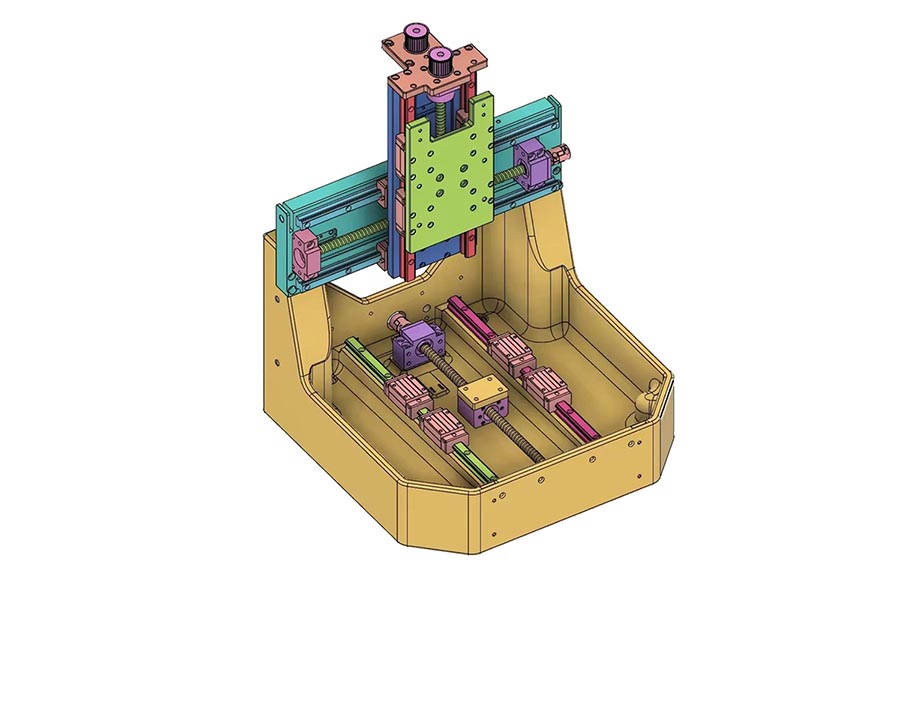
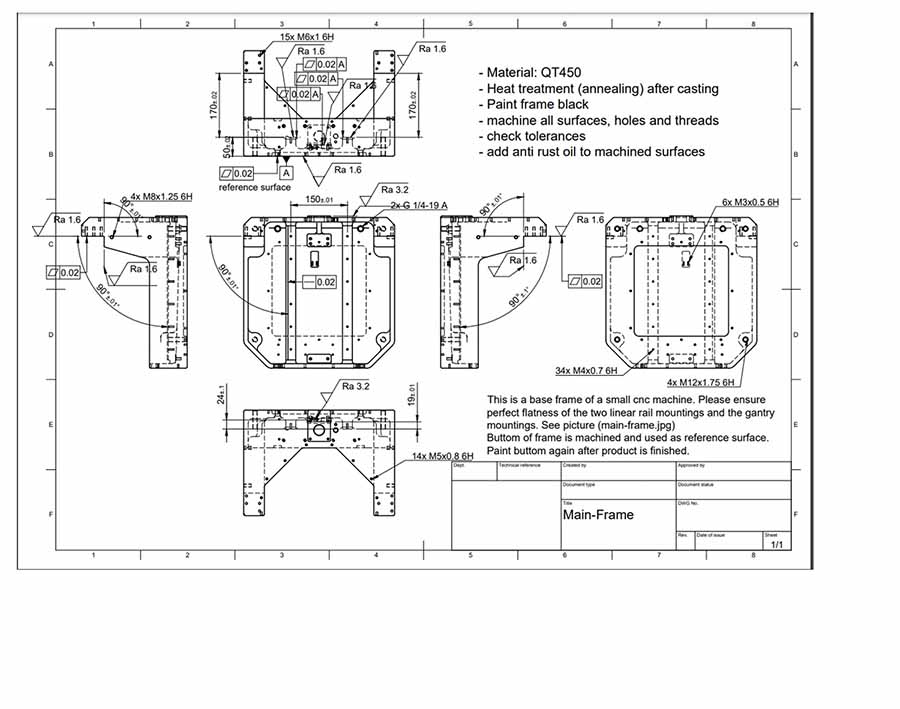
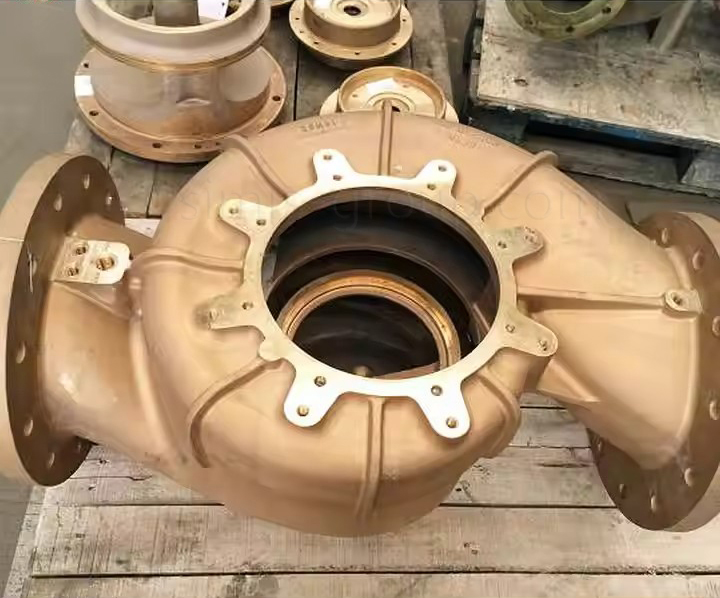
Confirm customization requirements
Design Review and Samples
Simis engineers first check the 3D and plane drawings. This makes sure your design is ready for manufacturing. If you have a sample part, we can make the new parts based on that sample.
Define Part Requirements
We confirm what the part needs to do. This includes things like its strength, hardness, wear, and rust resistance. We also set the exact size, tolerance, and finish quality needed.
Confirm Casting Material
Our engineers help you pick the right cast copper material. This choice depends on where the part will be used and your technical needs. We give advice based on material cost, strength, and resistance to wear or rust.
Choose the Casting Method
We select the best casting process for your part. We base this choice on your price goal, the part’s shape, its required accuracy, and the material.
Make Molds and Samples
We build the casting molds using your approved drawings or samples. Then, we cast the first batch of samples using the chosen material and process.
Full Sample Inspection
The finished samples go through a full check. This confirms they meet all design standards and your quality demands. We give you reports covering size, performance, material makeup, and non-destructive testing.
Production and quality control
Mass Production
After you check and approve the sample, we start the mass production plan. We get all the materials ready based on your order. We use the exact same machines and process as we did for the sample. This makes sure every single part we make is the same.
Quality Control During Production
We run tight quality checks while making the parts. We pull parts for checks often during the process. We test their size, look, and strength. This ensures every batch of cast copper parts is consistent and meets your needs.
Final Product Quality Inspection
We use multiple inspectors for the final check. They do many tests on the finished product. These tests cover size accuracy, surface quality, and part strength. This step makes sure all cast copper parts meet your quality standards.
Packaging and Delivery
We securely package and ship all approved parts. We pick the right packaging to prevent damage during shipping. We also choose the best delivery method (air, sea, or land) to get your parts to you on time.
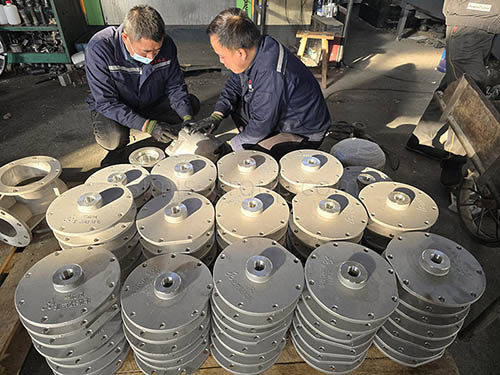
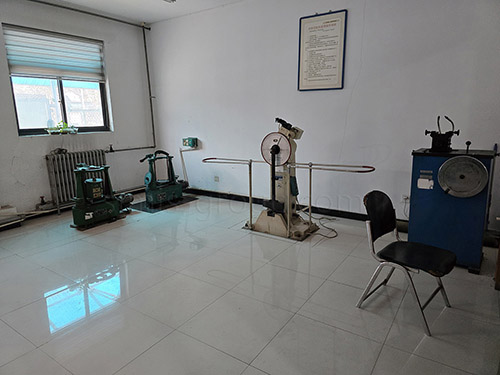
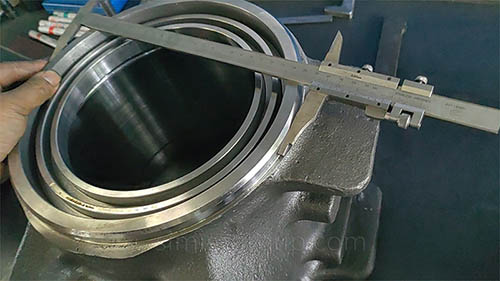
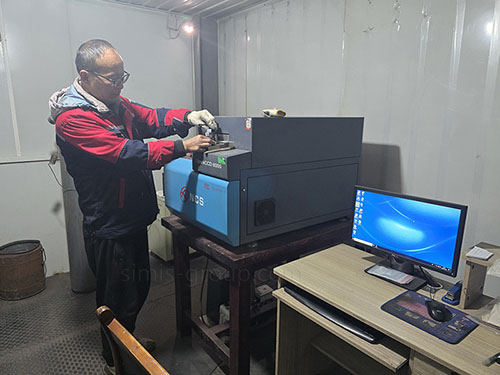
To order custom parts, please email us your design drawings and 3D models. Our team will review the detailed part parameters and the 3D model to provide you with an accurate quote.


